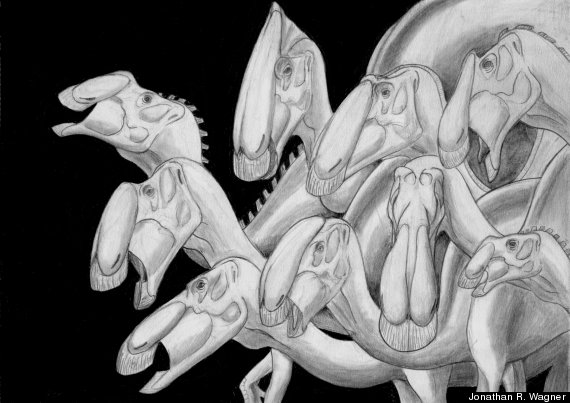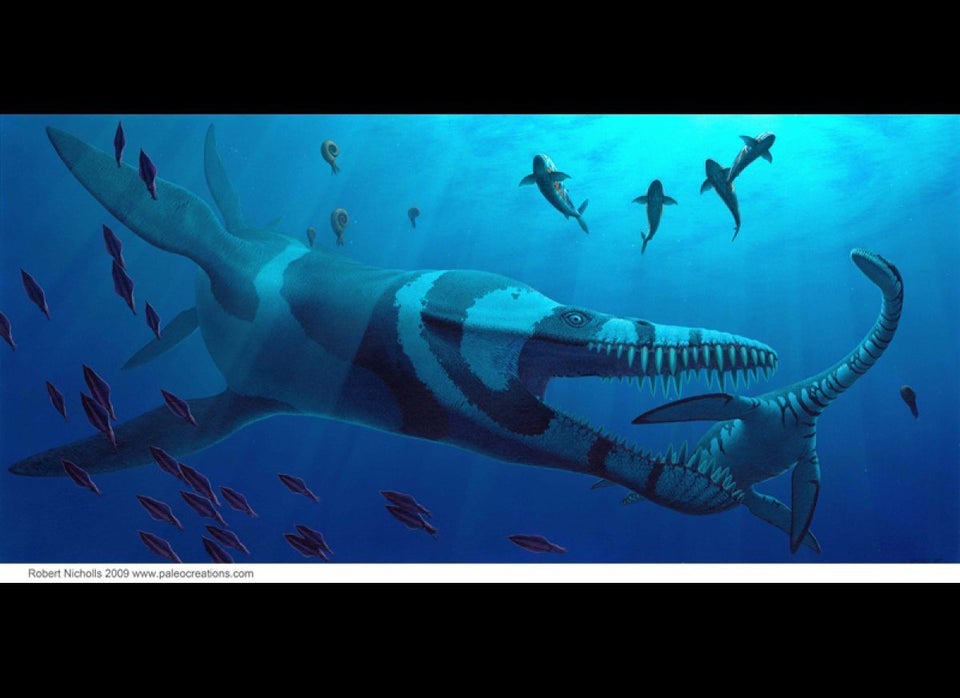
A duck-billed dinosaur that lived 73 million years ago and had huge nasal cavities has been discovered in northern Mexico.
The partial skeleton of Latirhinus uitstlani (Latirhinus means "broad nose" in Greek) was actually discovered in 1987 and sat in a museum for years, as researchers thought the bones belonged to Gryposaurus, another hadrosaurid. It wasn't until 2006 when Claudia Inés Serrano Brañas and Albert Prieto-Márquez, the co-authors of a recent study describing the dinosaur, realized it was a new species.
Prieto-Marquez, a paleontologist and evolutionary biologist at the Bayerische Staatssammlung für Paläontologie und Geologie in Munich, told The Huffington Post that even for a saurolophine, a sub-group of hadrosaurids known for having large nasal cavities, Latirhinus had an especially huge nose.
He said he knew he had discovered a new species "from the moment [he] saw the nasal bone and the wide angle of its dorsal margin." He added, "I had never seen a nasal with such broad contour."
Because soft tissue isn't preserved, there's no way of knowing the purpose of the dinosaur's enlarged nose, Prieto-Marquez said. Latirhinus could have had an enhanced sense of smell, making it better able to detect potential predators. The large cavity could have also contained some sort of inflatable bladder that could have been used to communicate with other dinosaurs.
In addition to its big nose, the dinosaur possessed sturdy hind limbs ending in three toes, and relatively smaller and thinner forelimbs ending in 4 digits- meaning this animal was thumb-less.
"When walking and feeding, Latirhinus would normally walk on four legs, although when it needed to increase the pace and run, it could rise on its two hind legs," Prieto-Márquez said. "A long tail would extend posteriorly to counterbalance the anterior part of the body."
Latirhinus was a member of Hadrosauridae, a family of herbivore dinosaur that included Parasaurolophus, a dinosaur featured in "The Lost World: Jurassic Park."
The dinosaur, which most likely had a leaf-dominated diet of ferns and seeded plants, provides an evolutionary link between members of the kritosaurin subgroup, such as Gryposaurus, which lived in North America, and Secernosaurus, which lived in South America.
"The finding of Latirhinus shows us that kritosaurins were widespread throughout the Americans," Prieto-Marquez told HuffPost.
Their paper appears in the current issue of Historical Biology: An International Journal of Paleobiology.
This illustration, by Jonathan R. Wagner, features a montage of different species of saurolophine hadrosaurids similar to Latirhinus.

